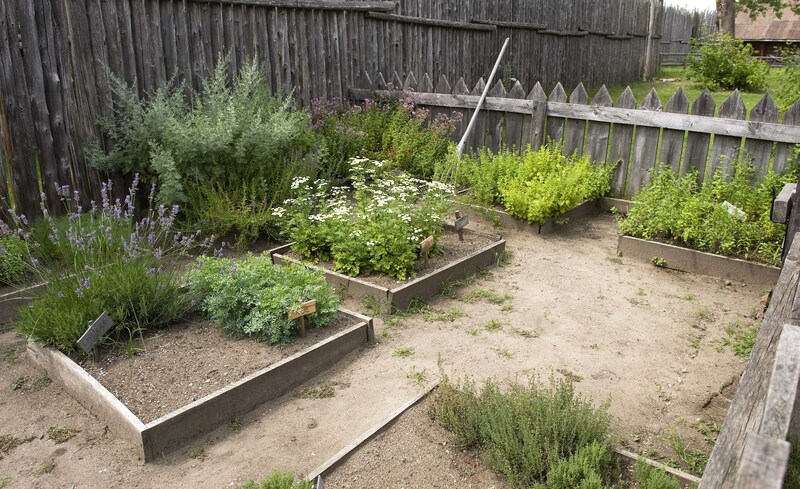Guard your garden from severe weather with these expert tips
Posted on 03/07/2025
Guard Your Garden from Severe Weather with These Expert Tips
If you're a gardening enthusiast, you know how much joy your garden brings. But nothing feels worse than seeing your hard-earned garden destroyed by severe weather. From storms and hurricanes to heatwaves and frosts, unpredictable weather can put your beloved plants at risk. Fortunately, there are practical steps and expert-recommended strategies you can follow to shield your outdoor oasis from nature's wrath. In this article, discover a comprehensive guide on how to protect your garden from severe weather, ensuring it remains resilient all year round.
Understanding the Severe Weather Threats to Your Garden
Gardens can fall prey to various weather-related challenges. Knowing precisely what you're up against is the foundation for effective protection. Here are common severe weather threats to gardens:
- Heavy Rainfall and Flooding: Causes root rot, soil erosion, and plant damage.
- High Winds and Storms: Break branches, uproot plants, and scatter debris.
- Hail: Shreds leaves, bruises stems, and harms fruits and flowers.
- Drought and Heatwaves: Dry out soil, wilt plants, and increase risk of pest infestations.
- Frosts and Snow: Damage tender shoots, stunt growth, or kill sensitive plants.
Why is Weatherproofing Your Garden Important?
Weatherproofing isn't just about aesthetics; it's about ensuring plant health, yields, and preserving your investment of time and resources. Strategic protection also promotes biodiversity, soil quality, and long-term sustainability.

Expert-Recommended Strategies for Severe Weather Garden Protection
Let's dive into proven methods to guard your garden from extreme weather. These approaches blend scientific research and practical wisdom from experienced horticulturists.
1. Assess and Improve Garden Drainage
Poor drainage is a leading cause of plant stress during storms and heavy rainfall. Standing water leads to root rot and fungus.
- Elevate your garden beds: Raised beds allow excess water to drain efficiently.
- Add organic matter: Mulch and compost improve soil structure, enhancing drainage.
- Install French drains or soakaways: These systems redirect water away from planted areas.
- Grade the landscape: Ensure slopes guide water away from your most vulnerable plants.
2. Shield Plants Against High Winds
Stormy winds can snap branches and uproot young plants. Enhance wind protection by:
- Planting windbreaks: Hedges, shrubs, or even quick-growing trees like willows and poplars can help.
- Using garden fencing: Fences or trellises serve as barriers, buffering winds before they reach delicate plants.
- Securing tall plants: Stake and tie tall flowers, young trees, or vegetables to sturdy supports.
- Arranging container plants against a wall or moving them indoors during forecasts of dangerous winds.
3. Prepare for Hailstorms
Hail can quickly devastate soft leaves, fruit, and blossoms. Prevent sudden hail damage with the following:
- Use garden cloches or row covers: These act like umbrellas, protecting small and young plants.
- Install hail netting: Sturdy, UV-resistant nets safeguard fruits, vegetables, and tender ornamentals.
- Move containers under shelter if a severe hailstorm is forecasted.
4. Combat Drought and Excessive Heat
Extended dry periods and heat waves can weaken plant systems and increase susceptibility to pests. Here's what experts suggest:
- Mulch generously: Organic mulch conserves moisture, keeps roots cool, and suppresses weeds.
- Install drip irrigation: Delivers water directly to roots with minimal evaporation loss.
- Water early in the day: Minimizes evaporation and helps plants weather midday heat.
- Shade vulnerable plants: Erect temporary shade cloths or use existing trees for shelter during scorching spells.
Choosing drought-tolerant plants--such as lavender, sedum, or Echinacea--further enhances resilience.
5. Defend Against Frost and Snow
Sudden freezes, heavy frosts, and snow are hazardous for both annuals and perennials. Prepare with these tips:
- Bring container plants indoors: Houseplants or tender herbs can usually survive a cold snap inside.
- Cover beds with horticultural fleece or blankets: Lightweight, breathable fabrics offer vital insulation.
- Mulch heavily in autumn: Mulch shields roots from freezing, particularly for perennials.
- Avoid pruning in late autumn: Unpruned growth helps insulate shrubs and maintains plant health during winter.
For fruit trees or roses, wrap trunks and lower branches with burlap or tree wrap to guard against sudden temperature swings.
Essential Tools and Products for Severe Weather Garden Protection
To efficiently implement garden protection from severe weather, invest in these essential supplies:
- Heavy-duty stakes and twine for plant support
- Robust row covers, fleece, or garden blankets
- Rolls of shade cloth or hail netting
- Sturdy garden fencing materials
- Organic mulch and compost
- Drip irrigation kits or soaker hoses
Smart Garden Design for Resilience
Choose Weather-Resistant Plants
One of the best ways to guard gardens against severe weather is by selecting plants native to your region or those bred for durability. Look for signs such as:
- Disease resistance
- Drought and flood tolerance
- Wind and cold hardiness
Planting a diverse mix creates a buffer--if one species fails, others may thrive and provide ongoing beauty and structure.
Zone Your Garden
Create microclimates for increased protection. For example, position sensitive plants near a south-facing wall for warmth or under taller trees for shade. Utilizing the landscape's natural contours can deflect wind or channel rainfall away from critical beds.
Practice Managed Maintenance
- Prune dead or weak growth before storms to prevent branches from snapping.
- Cultivate healthy soil regularly to promote robust root systems.
- Rotate crops and vary planting locations annually to minimize disease buildup and pest outbreaks triggered by weather stress.
Emergency Garden Protection: What to Do Before and After Severe Weather
Before the Storm
- Secure all tools, furniture, and garden structures to prevent them from becoming flying hazards.
- Harvest ripe fruits, vegetables, or flowers to avoid losses from bruising or rot.
- Double-check all covers, nettings, and structural supports to ensure they're tightly fixed.
- Identify drainage trouble spots and clear blockages before heavy rain.
After the Storm
- Assess plant damage promptly; prune broken stems to reduce disease risk.
- Remove debris and compacted mulch to restore air flow and prevent mold.
- Monitor for pests or fungal issues that often follow stressful weather events.
- Water stressed plants carefully, avoiding overwatering if the soil is already saturated.
Expert Advice: The Importance of Being Proactive
Seasoned gardeners and horticulturists agree--the best defense against severe weather is preparation and resilience-building. Don't wait for the next storm, drought, or frost to strike. By integrating these expert tips into your regular gardening routine, you ensure that your backyard sanctuary stands strong in the face of nature's unpredictability.
Summary: Key Steps to Weatherproof Your Garden
- Understand your local climate risks and pick plants accordingly.
- Invest in protective structures like netting, fleece, and sturdy supports.
- Implement good drainage and soil health practices.
- Regularly inspect and maintain your garden's defenses.
By following these strategies, you'll guard your garden from severe weather and enjoy a thriving landscape no matter what the forecast brings. Remember, giving a little extra attention before and after storms pays off with vibrant colors, healthy harvests, and a garden you can be proud of year after year.

Frequently Asked Questions: Protecting Gardens from Extreme Weather
1. Can I completely disaster-proof my garden?
No garden can be 100% immune, but following these tips will significantly reduce damage and loss. Building resilience is about minimizing risk and preparing for quick recovery.
2. What's the best way to quickly protect plants before a storm?
- Move containers inside or to sheltered areas.
- Cover vulnerable beds with fleece or tarp.
- Stake tall plants and secure garden structures.
3. How do I revive plants after a severe weather event?
Trim damaged sections, water as necessary, add fresh mulch, and monitor for disease. Some plants, especially perennials, can bounce back with time and care.
Conclusion: Stay Ready, Stay Resilient
Your garden is more than just a collection of plants; it's a living ecosystem that deserves your protection. By using these expert-backed methods to guard your garden from severe weather, you'll transform seasonal threats into manageable challenges. Start implementing these protective steps today, and enjoy peace of mind knowing your garden stands ready for whatever the weather may bring.
Embrace these proven strategies and keep your garden flourishing in the face of all conditions!

